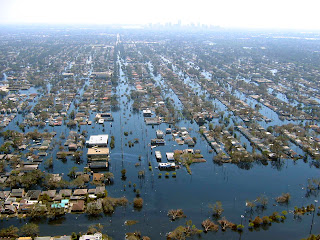
LIFE AFTER KATRINA
Source: Speak Up
Language Level: Upper intermediate
Standard accent: American
Speaker: Chuck Rolando.
New Orleans is one of the world’s favorite destinations, thanks to its Constant party atmosphere, its wonderful jazz music and food. But five years ago it suffered a major trauma when it was struck by Hurricane Katrina. The city it still trying to make a comeback and the victory of its football team. The New Orleans Saints, in last season’s Super Bowl, was seen as proof that it was succeeding. Mary Lacoste was born and raised in New Orleans and today she runs tours of the historic French Quarter wasn’t directly hit by Hurricanes Katrina.
Mary Lacoste
Standard American/New Orleans accent)
We were very very fortunate. It had been flooded many, many years ago, we just made the levees higher. But it’s been sort of the anchor now for bringing back the city because it’s the tourist part that generates the funds. In flat land, the ground near our river is higher. And so we were just very fortunate that this was preserved and, slow but sure, we’ve getting back together.
In the pas New Orleans was booth French and Spanish territory and these influences can be seen in its architecture, while the presence of African slaves and their descendants helped give the world jazz. We asked Mary LaCoste what was the biggest change that she had seen in New Orleans during her lifetime.
Mary LaCoste
Integration: I grew up in a white world and in the streetcars the black people sat behind a certain little barrier that could move from seat to seat. And then slow but sure, with jobs and whatnot, you began to learn about other people. I was teaching: some of the teachers were black, but when I first started teaching I had to take a promise that I would not teach integration, to get a job! But things changed and then we began to realise that we had people with similar memories on both sides on the fence, and right now it’s working out, but we’re still discovering each other.
And, in spite of the destruction caused by Hurricane Katrina, Mary LaCoste thinks that New Orleans has a great future, thanks to its relaxed lifestyle:
Mary LaCoste
I still encourage my children to settle here –and my grandchildren –because I think that you can get a lifestyle where you work so hard all the time, that you forget to enjoy and so maybe it’s better to forego some prosperity, so that you’re near water and fish and people and food and celebrations.









